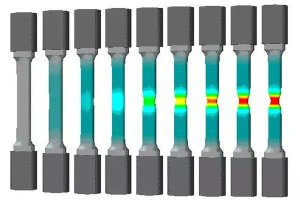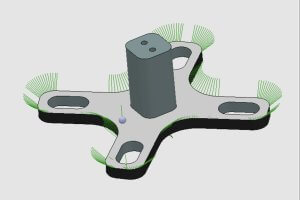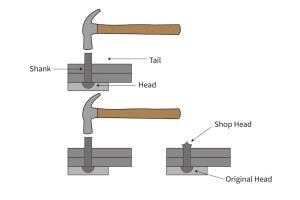Introduction
When it comes to CNC machining, the material you choose can make or break your project. Whether you’re working on a high-precision component or a bulk order of simple parts, understanding material machinability is key to ensuring the efficiency, quality, and cost-effectiveness of your production process. For purchasing managers, engineers, and anyone involved in the manufacturing supply chain, this knowledge is essential for making informed decisions that affect both the production timeline and the bottom line.
In this article, we’ll dive deep into the concept of material machinability, explain how it impacts CNC machining, and provide practical tips on selecting the right materials for your CNC machined parts. By the end, you’ll have a clearer understanding of what factors to consider when placing your next order and how to optimize your CNC machining processes.
What Is Material Machinability?
Material machinability refers to how easily a material can be cut, shaped, or drilled using machining tools like those in CNC machining. It’s a measure of how quickly and accurately a material can be machined into a finished product, with minimal tool wear and optimal surface finish. High machinability means the material can be processed quickly and efficiently, while low machinability indicates a more challenging material that requires careful handling and specialized tools.
Several factors influence machinability, including the material’s chemical composition, hardness, strength, thermal conductivity, and microstructure. These properties determine how a material reacts under the stress of machining, how much heat is generated, and how likely the material is to wear down the cutting tools.
Key Factors Influencing Material Machinability
1. Chemical Composition
The elements that make up a material play a significant role in its machinability. For instance, carbon content in steel affects its hardness and strength. High carbon steel is harder and stronger but more difficult to machine than low carbon steel. Alloying elements like chromium, nickel, and molybdenum can enhance strength and corrosion resistance but may reduce machinability.
2. Hardness
A material’s hardness is its resistance to deformation. While harder materials tend to be more durable, they are also more difficult to machine. For example, hardened steel and ceramics require specialized tools and techniques to achieve precise cuts without causing excessive tool wear.
3. Strength
The tensile strength of a material indicates how much force it can withstand before breaking. Materials with higher strength often pose greater challenges during machining because they generate more stress on the cutting tools, leading to faster wear and potential tool breakage.
4. Thermal Conductivity
Thermal conductivity is the ability of a material to conduct heat. Materials with high thermal conductivity, like copper, disperse heat quickly, reducing the risk of overheating during machining. Conversely, materials with low thermal conductivity, such as titanium, retain heat, which can lead to increased tool wear and thermal damage to the workpiece.
5. Microstructure
The microstructure of a material—how its grains, phases, and particles are arranged—affects its machinability. For example, materials with a uniform microstructure, like fine-grained metals, typically have better machinability than those with coarse or uneven microstructures.
Common Materials and Their Machinability in CNC Machining
Let’s take a look at some common materials used in CNC machining and how their properties influence machinability.
| Material | Hardness (HB) | Thermal Conductivity (W/m·K) | Typical Applications | Machinability Rating |
|---|---|---|---|---|
| Aluminum 6061 | 95 | 167 | Aerospace components, automotive parts | Excellent |
| Stainless Steel 304 | 190 | 16 | Kitchen equipment, medical devices | Fair |
| Titanium Grade 5 | 340 | 7.2 | Aerospace fasteners, medical implants | Poor |
| Brass (C36000) | 100 | 109 | Gears, valves, plumbing fittings | Excellent |
| Carbon Steel 1018 | 126 | 51.9 | Shafts, machine parts, fixtures | Good |
| Inconel 718 | 331 | 11.4 | Turbine blades, engine components | Very Poor |
Practical Tips for Selecting Materials for CNC Machining
1. Understand Your Application Requirements
Before choosing a material, consider the specific requirements of your application. Does the part need to withstand high temperatures? Is corrosion resistance important? Will the part be subjected to high stress or impact? Understanding these factors will help you narrow down the material options that will provide the best performance in your application.
2. Balance Machinability with Performance
While it might be tempting to select a material solely based on its machinability, it’s important to balance this with the material’s performance characteristics. For example, while aluminum is highly machinable, it may not provide the necessary strength or wear resistance for certain applications. Conversely, while titanium is difficult to machine, its excellent strength-to-weight ratio makes it ideal for aerospace applications.
3. Consider Tooling and Machining Costs
Materials with low machinability can increase tooling costs due to the need for specialized tools and frequent replacements. Additionally, longer machining times can drive up production costs. When selecting a material, consider the total cost of machining, including tooling, labor, and potential downtime for tool changes.
4. Leverage Supplier Expertise
Your CNC machining supplier can be an invaluable resource when selecting materials. Experienced suppliers can provide insights into the machinability of different materials and recommend the best options based on their machining capabilities and your project requirements.
5. Test and Validate
If you’re working with a new material or have stringent requirements for a project, consider conducting test runs or prototyping to validate the material’s machinability and performance. This can help identify potential challenges early on and allow you to make adjustments before full-scale production.
Conclusion
Understanding material machinability is crucial for optimizing CNC machining processes and ensuring the success of your projects. By considering factors such as chemical composition, hardness, strength, thermal conductivity, and microstructure, you can select the best materials for your CNC machined parts. Remember to balance machinability with performance, consider the total machining costs, and leverage the expertise of your suppliers. With these strategies in mind, you’ll be well-equipped to make informed decisions that lead to efficient production and high-quality results.
For purchasing managers and engineers, having a deep understanding of material machinability not only helps in selecting the right materials but also in negotiating with suppliers, setting realistic production timelines, and ultimately delivering superior products to your customers.
Other Articles You Might Enjoy
- Custom CNC Machining for High-Tech Security Systems
Introduction to CNC Machining for High-Tech Security Systems Custom Computer Numerical Control (CNC) machining plays an integral role in the production of high tech security systems. It is a manufacturing…
- Custom CNC Machining for High-Performance Marine Equipment
Introduction to Custom CNC Machining for High-Performance Marine Equipment The marine industry requires machinery and equipment that can withstand harsh sea conditions while maintaining optimal performance. This necessitates robust, high-quality…
- Tool Steel Grades for CNC Machining: D2 vs. A2 - A Comparative Study?
Introduction to CNC Machining and Tool Steel CNC machining, or computer numerical control machining, is a manufacturing method that employs pre-programmed software to direct the activity of factory tools and…
- Plastic vs. Metal CNC Machining: A Detailed Comparison?
CNC Machining: An Essential Process Across Industries Computer Numerical Control (CNC) machining is a digital manufacturing technology that makes use of pre-programmed computer software to dictate the movement of various…
- Revolutionizing CNC Machining for the Future of Smart Wearables
Introduction: CNC Machining and Smart Wearables CNC (Computer Numerical Control) machining is a manufacturing process that utilizes computerized controls to operate and manipulate machine tools, converting raw materials into finished…
- Fast CNC Machining Services for Stainless Steel Prototyping
CNC Machining and its Relevance in Manufacturing Computer numerical control (CNC) machining is a manufacturing process involving the use of pre-programmed computer software to dictate movements for complex machinery. It…









